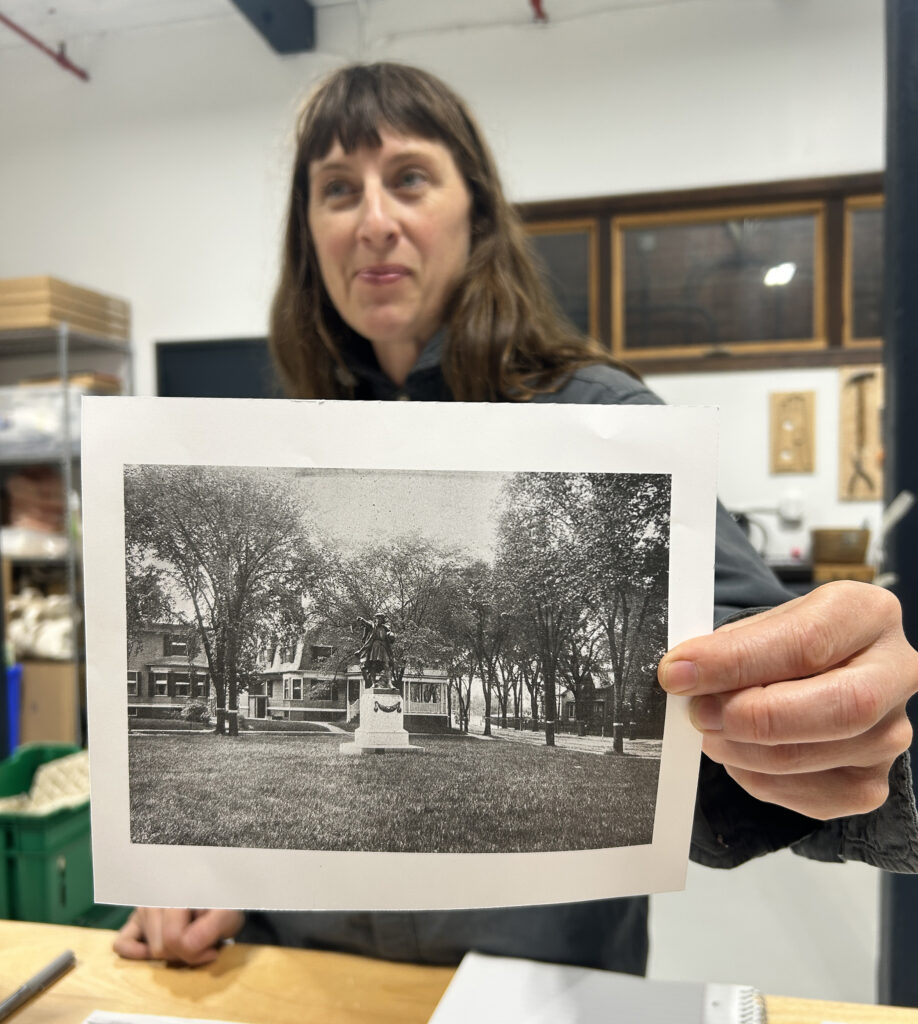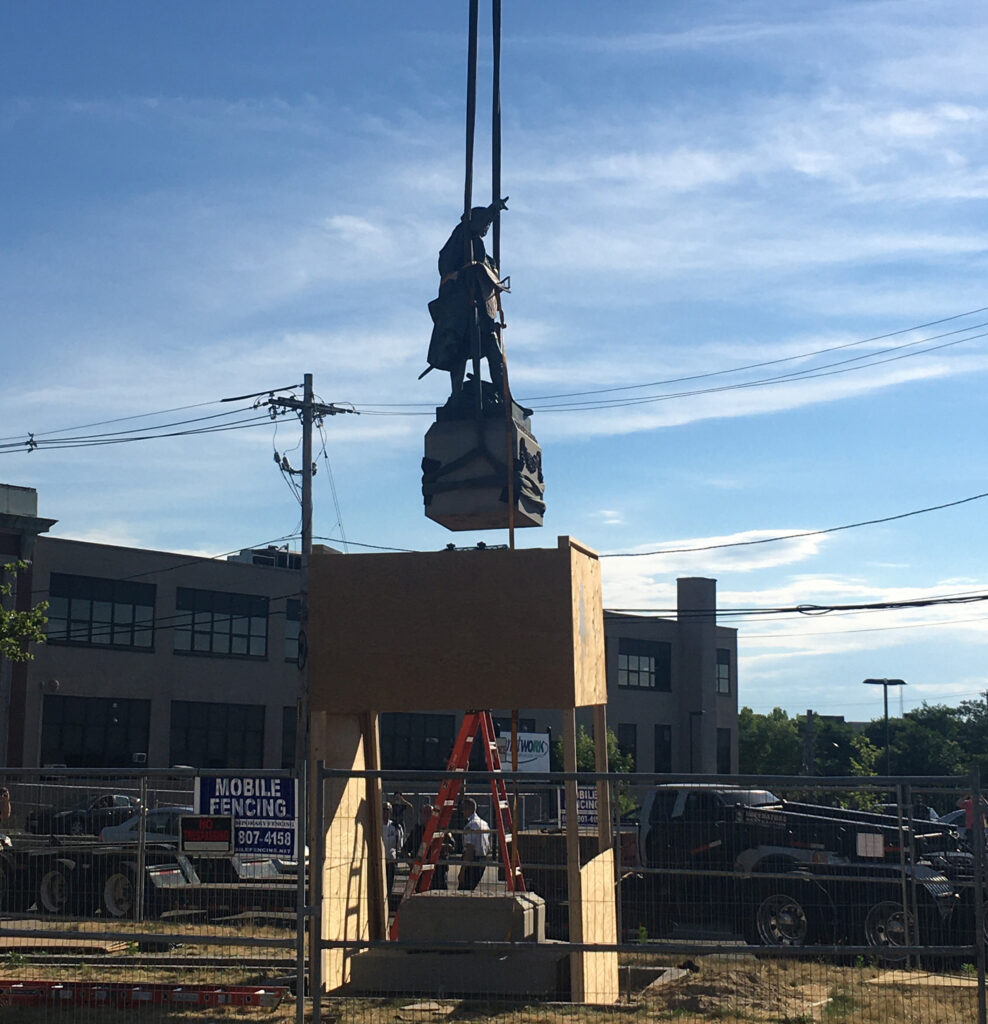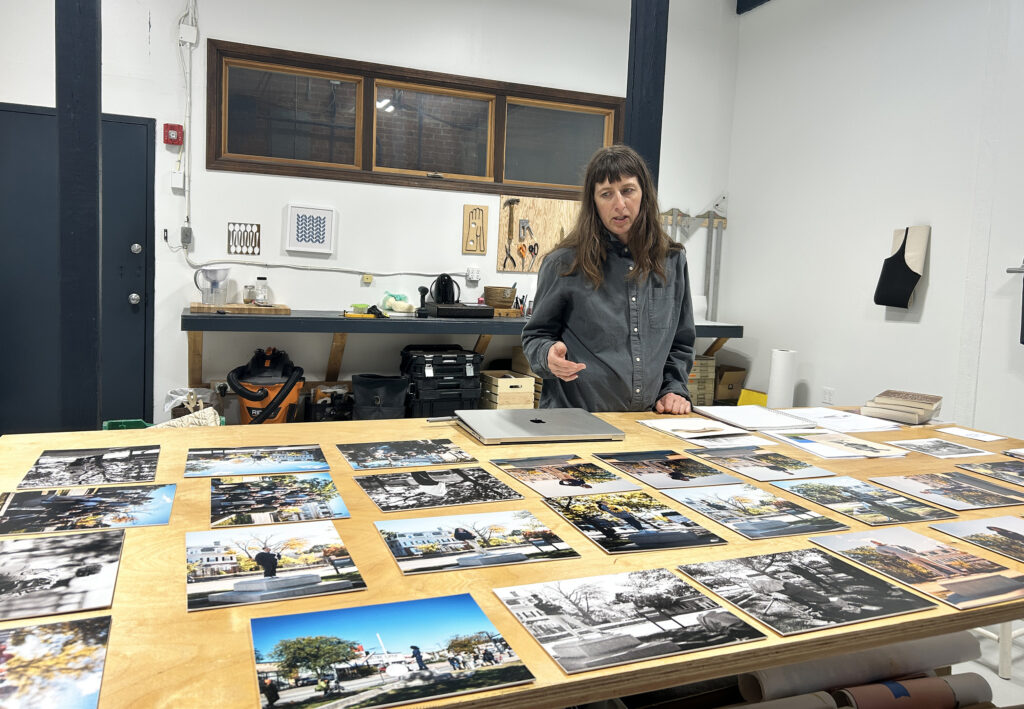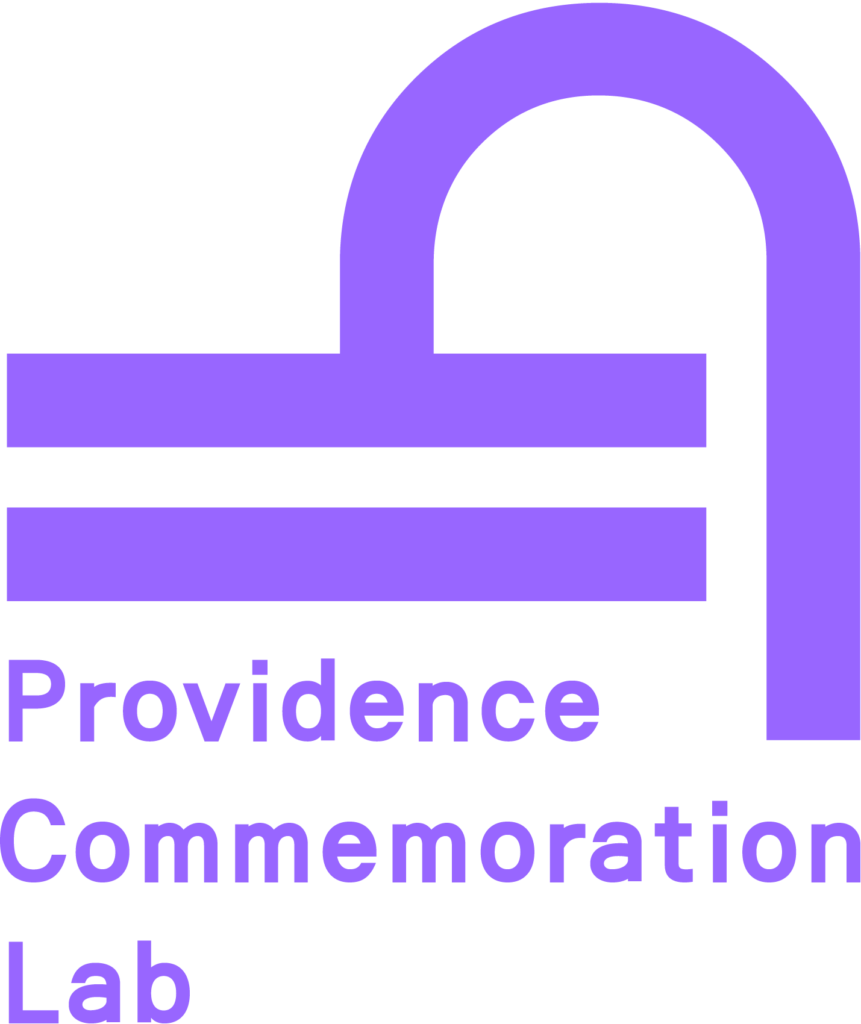Artist Spotlight: Lu Heintz | Former Columbus Square
Studio Loba recently visited artist Lu Heintz to chat about her practice, PCL, the Former Columbus Square and more. Read below to see what she had to say.

Tell us what commemoration means to you.
Commemoration is storytelling. It’s about our past, it’s about what or who was important in our past. But it’s still storytelling — whoever the narrator is has an agenda. And certain stories have been so dominant that they’ve propelled myths. So commemoration in this country has primarily supported the myth-making of this country. And I think this project is about reversing that, healing that, drawing attention to the fact that there have always been so many other stories. They’ve been thriving. They’ve been strong. They just haven’t been cast in bronze, haven’t claimed land and space.
Commemoration in this country has primarily supported the myth-making of this country. And I think this project is about reversing that, healing that, drawing attention to the fact that there have always been so many other stories. They’ve been thriving. They’ve been strong. They just haven't been cast in bronze, haven’t claimed land and space.
Lu Heintz
What is your relationship with the Former Columbus Square?
I feel the echoes of that time period of the [Columbus] statue going up. I live in a house that was built at that time. I walk through the cemetery around the corner and I look at the names of the people that lived there … It’s partly about being an upper-middle class white person in this neighborhood, and feeling conflicted and aware of that while watching South Providence change. Considering the agenda of the Elmwood Neighborhood Association comes from the people who live in the nicest houses… what their agenda is now doesn’t feel that different from what their agenda was when they put the Columbus statue up. So how do you do right by that, as someone who sees that, as someone who has some privilege? That’s something I’ve carried.

You were there on the day the Columbus statue was taken down. What was that like?
I remember there were a few people that texted me on Signal, a few emails and phone calls that came in … I grabbed a bunch of posters, for people to hold while we were standing there. I got down there and there was a pretty big crowd already, maybe 50-100 people. It’s hard to say, because people kept coming in, they kept showing up because there were people posting on social media. And [the statue] had had 24-hour police presence for weeks, and plywood all boarding it up … and then it was taken down. So there it was, coming down, and I was standing next to this family — this mom and her two girls — and this little girl said, “This is the best day of my life.” (laughs) That was cool.

How have you been thinking about intervening on this site?
The site is a heavily determined site, so laden with symbolic energy — not only the former statue, but the historic presence of Gorham, the present location of Tesla and Amazon … all these things surrounding Mashapaug Pond are very thick with symbolic energy. And in thinking about commemoration, I wanted to clear some of that… sort of cleanse the space. That’s a lot of what Val, Shey and I have been thinking about.

I’ve spent a lot of time in the area, on the land, around the waterways near there. What’s remarkable about the site is that it’s so close to Mashapaug Pond and all of its history, but it’s such a congested, high traffic area that it’s hard to realize that when you’re there. So much of what Columbus Square, Columbus Park, the statue, Gorham and the Elmwood Neighborhood Association were trying to do was to claim space in the Mashapaug region when it was settled by Indigenous folks for thousands of years. So I’m thinking about the ecosystem there, and a longer trajectory of time. Columbus’s statue being up there as a monument casts him as this historic figure, but he’s actually pretty recent — that’s a kind of myth-making right there. I’m trying to get to a decolonial, or even geologic view of time — thinking about the water, the trees, the plants, the life and the species that thrive in that area. And then also honoring the people that nurtured ways of living that were not in opposition to the ecosystem, but were integrated within it. There are a lot of different resources for traditional ecological knowledge, and so I’m trying to call to those and make the space resonate with the surrounding ecology.

Tell us more about how you’re going about that.
I think about social interaction and land, and how healthy relationships with the ecosystem can foster ways of being together. You know, people have a sense of belonging at Mashapaug Pond, there are people alive that remember growing up along the banks of the pond, and there are neighbors now who still live near there and have attachments. But the neighborhood gets fractured up by car culture and parking lots. So how does one foster a sense of belonging when people are displaced from the land? Something that Val, Shey and I have talked about is how to foster that sense of belonging with the land and to consider the site as land. We’ve done that in a few ways already. We had a cleansing, blessing ceremony, and a few other neighborhood gatherings. And every time, it feels really good. My piece “Pond Lands” is creating more opportunities for that to happen. It’s creating a forum for belonging in the space, creating objects to engage in the space and sit and feel comfortable and talk to other people, or to view future performances or interventions.
I think about social interaction and land, and how healthy relationships with the ecosystem can foster ways of being together. My piece “Pond Lands” is creating more opportunities for that to happen. It’s creating a forum for belonging in the space, creating objects to engage in the space and sit and feel comfortable and talk to other people.
Lu Heintz

What drives your larger creative practice, beyond your work at PCL?
I know “interdisciplinary” is like a buzz word, but it’s true. I do a lot of things. I started with physical sculpture, and then pivoted into craft. And then, by narrowing down into craft, I started really thinking about technology — what we consider craft, what we consider technology, and the ideologies and power dynamics that go with those labels, and investigating them through a feminist perspective. That research and work then brought me to thinking more about other exclusions that happen in terms of indigenous art and craft, feminist domestic work … So I would say that my practice is interdisciplinary, but the provocations are about those exclusions. And [my practice is about] valuing types of labor and work that are often not included in fine art practices, or combining disciplines that are considered antithetical, but are actually interesting when combined … like mixing temporal periods. So sound and video and installation enter my work, as well as tools like typewriters or sewing machines … There’s also working with people, doing interviews … There’s all kinds of work to do, depending on what it is that I’m searching for and thinking about.
Learn more about Lu here, and follow the PCL Instagram to see more from our Studio Visit series!

